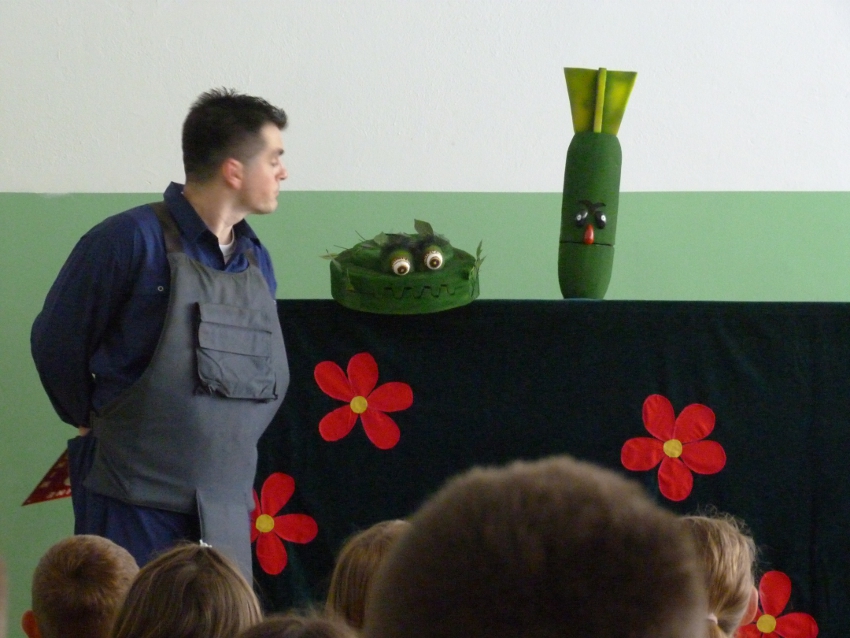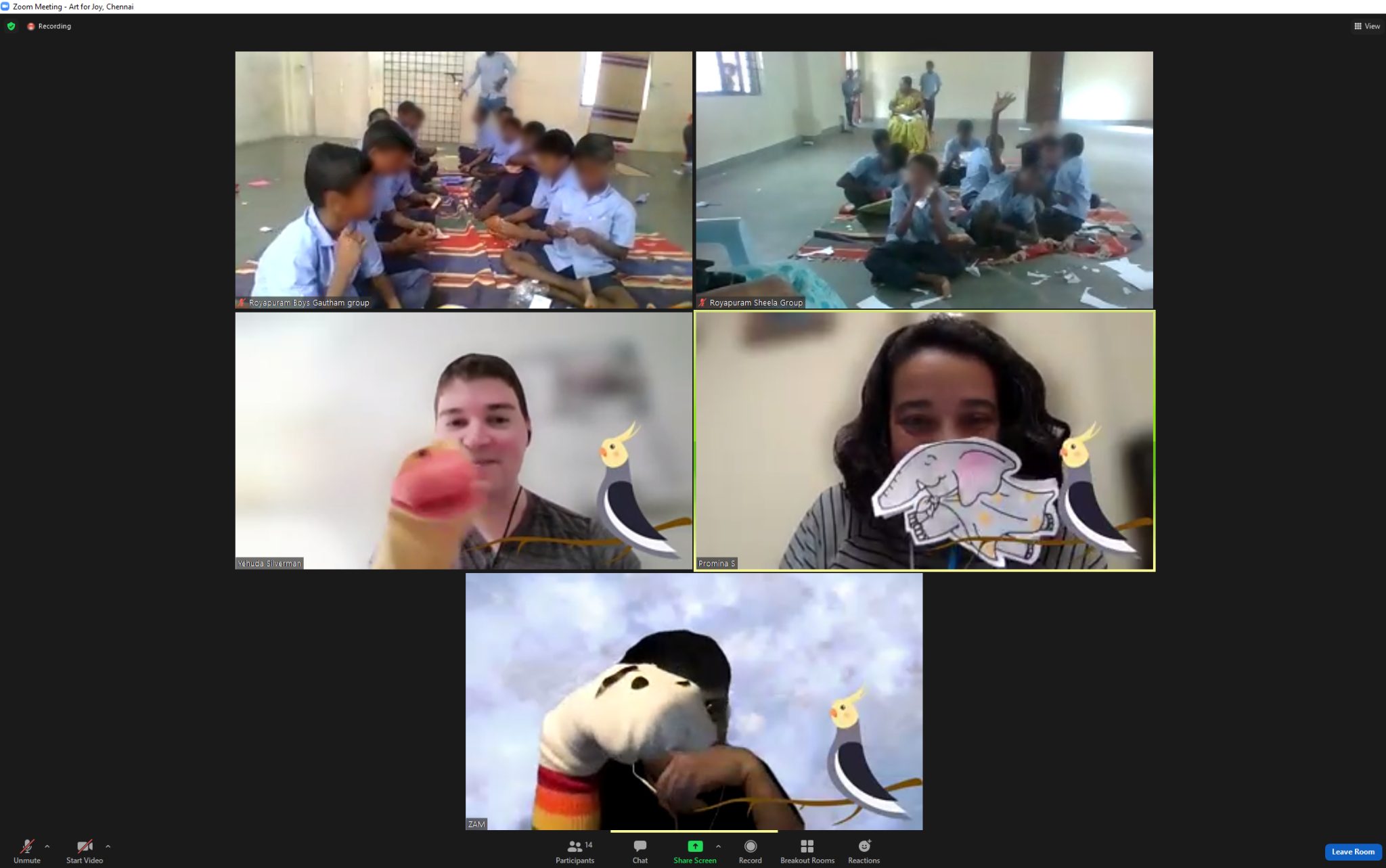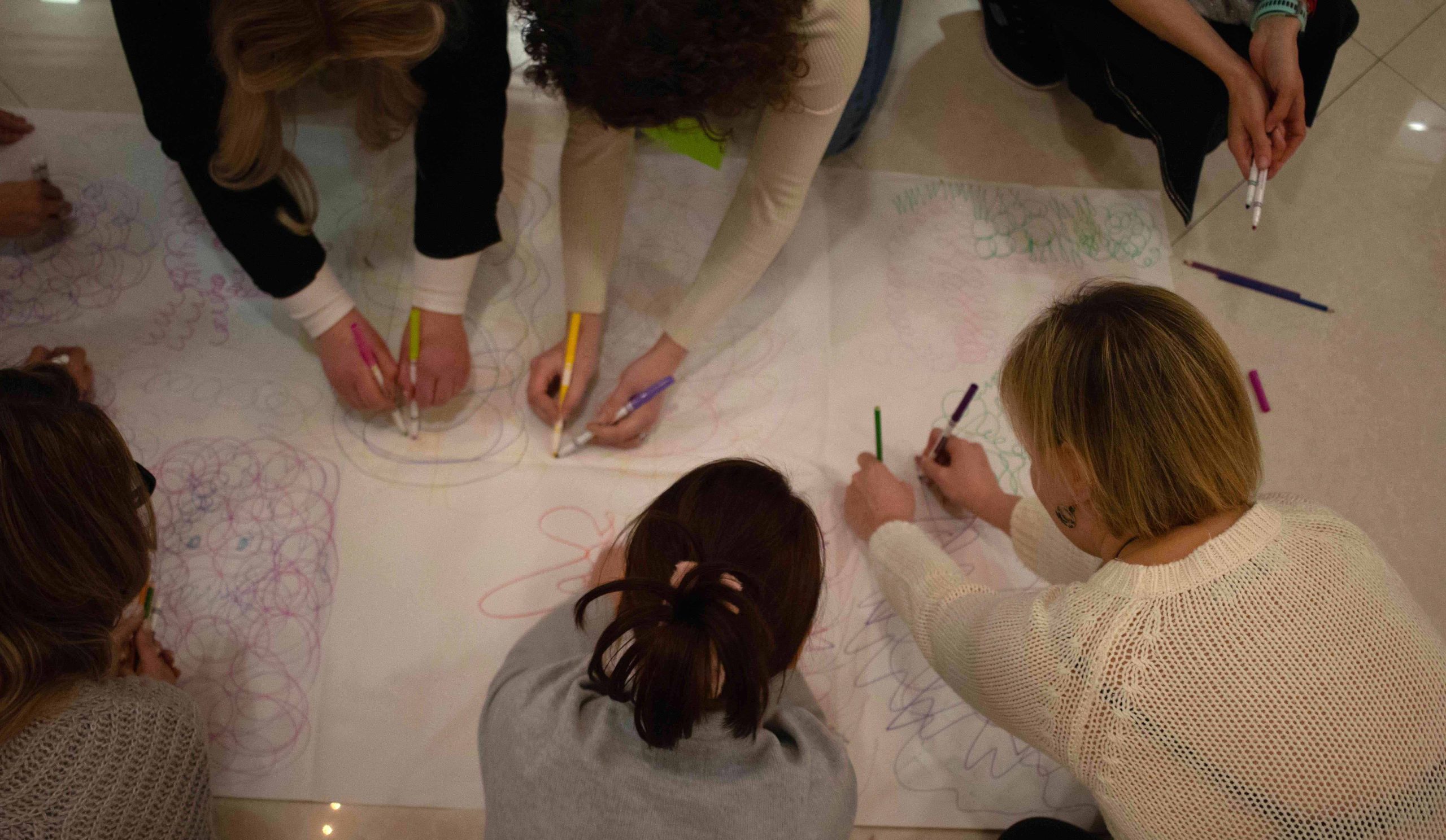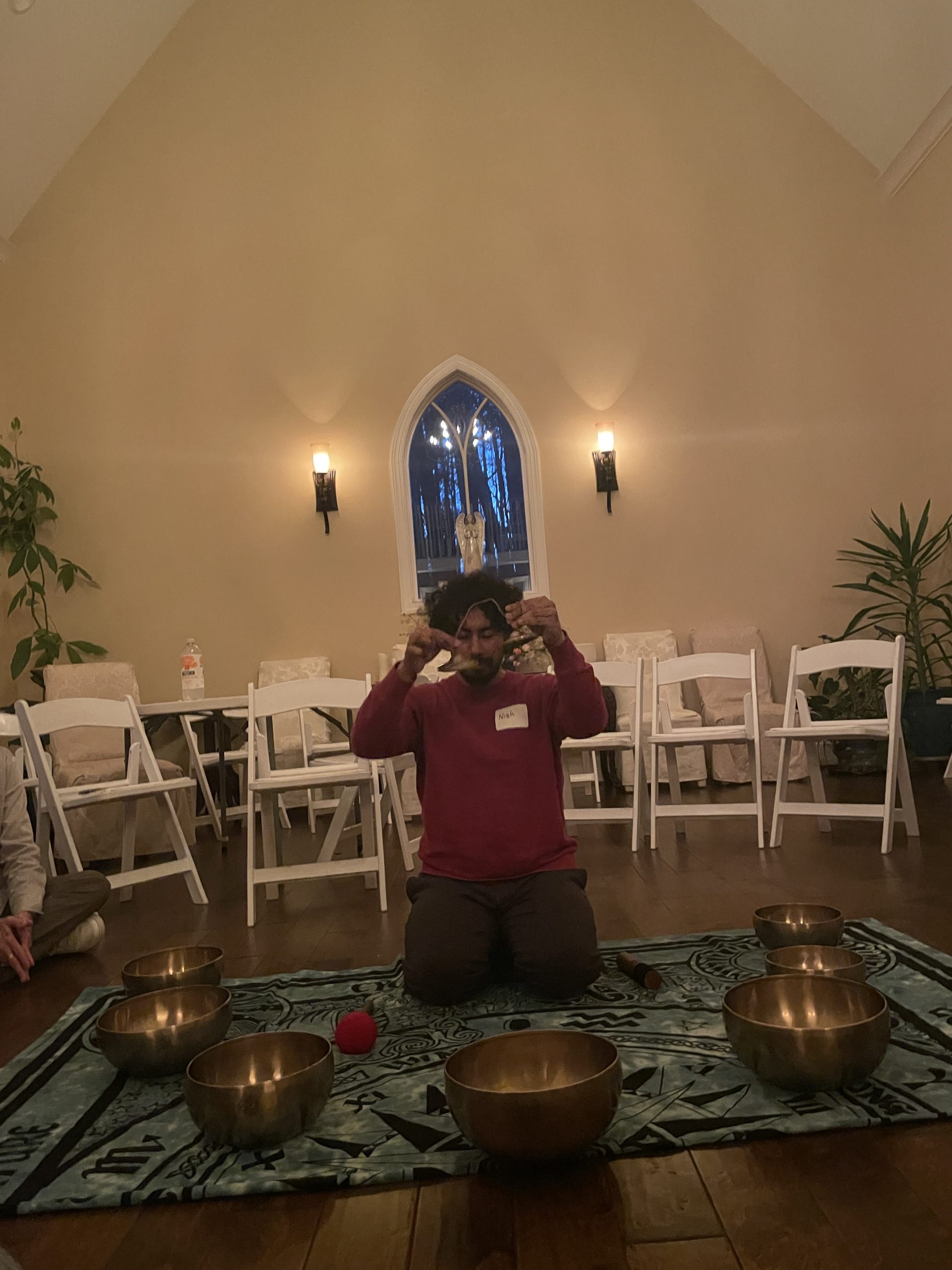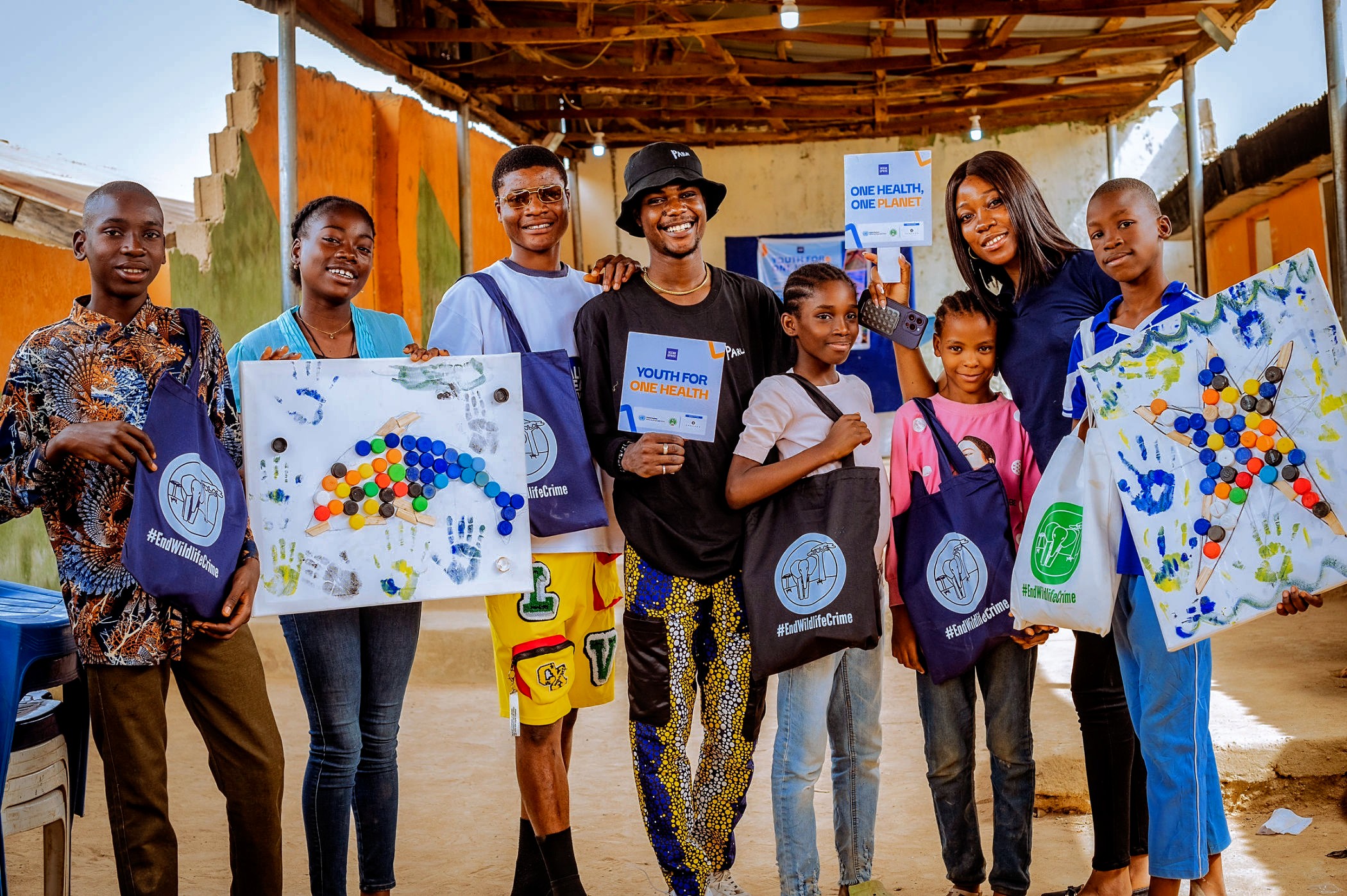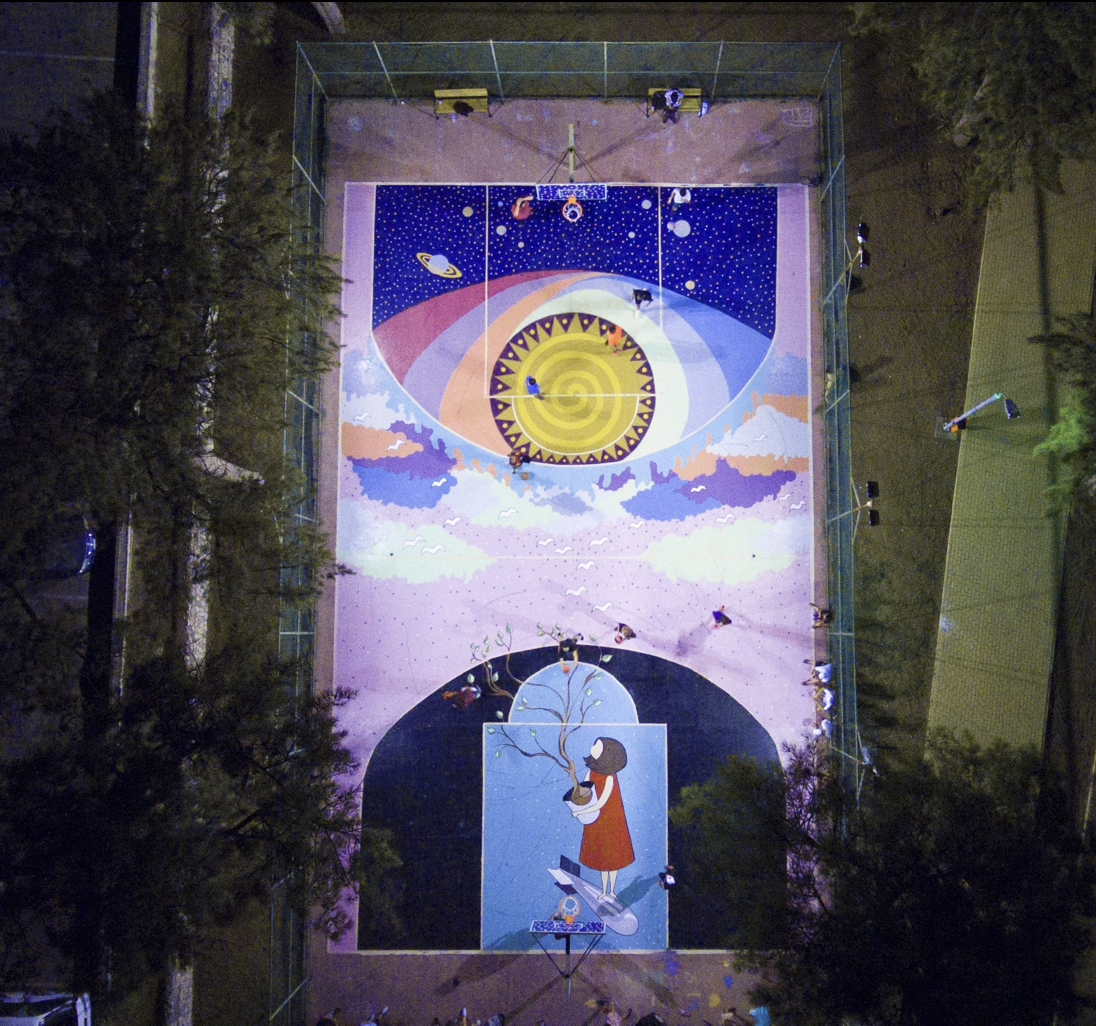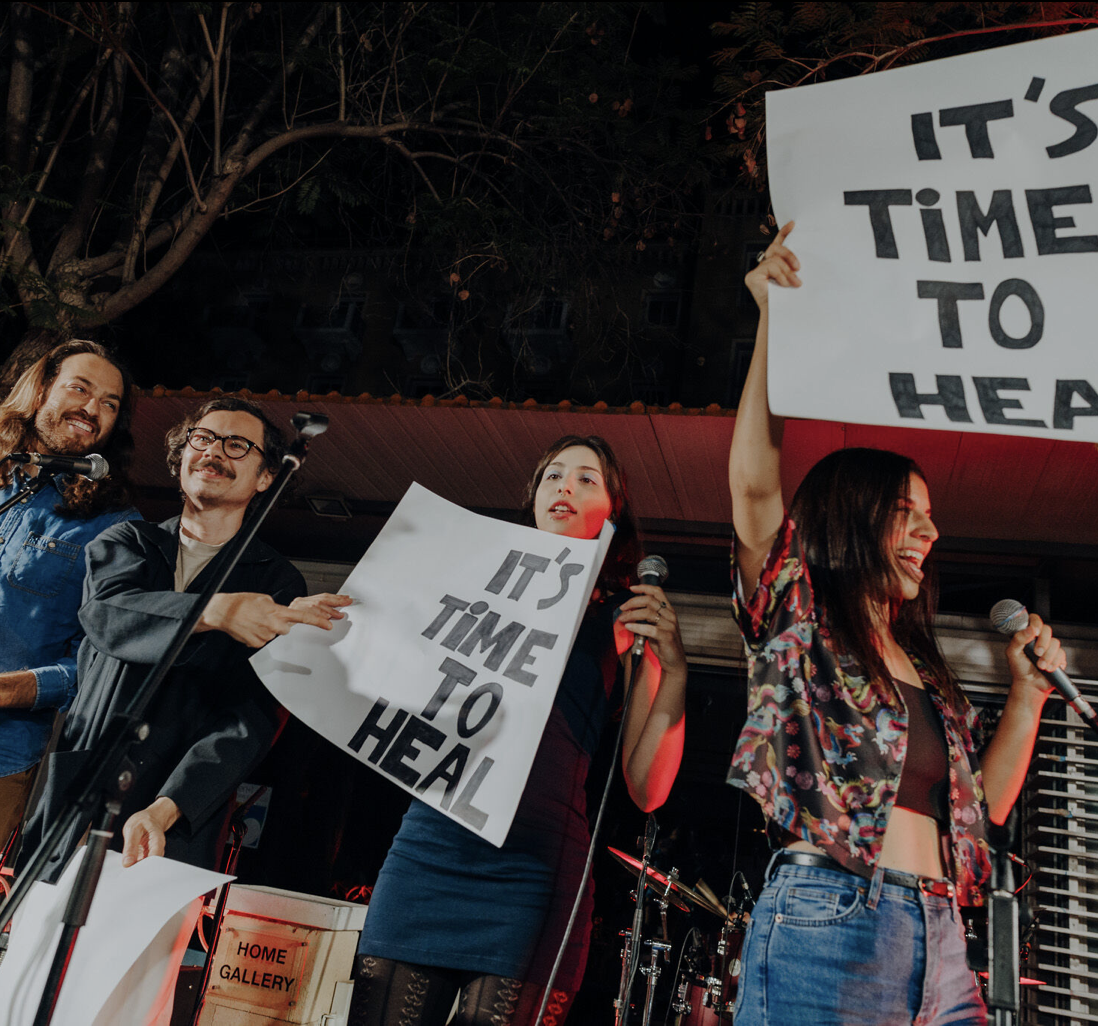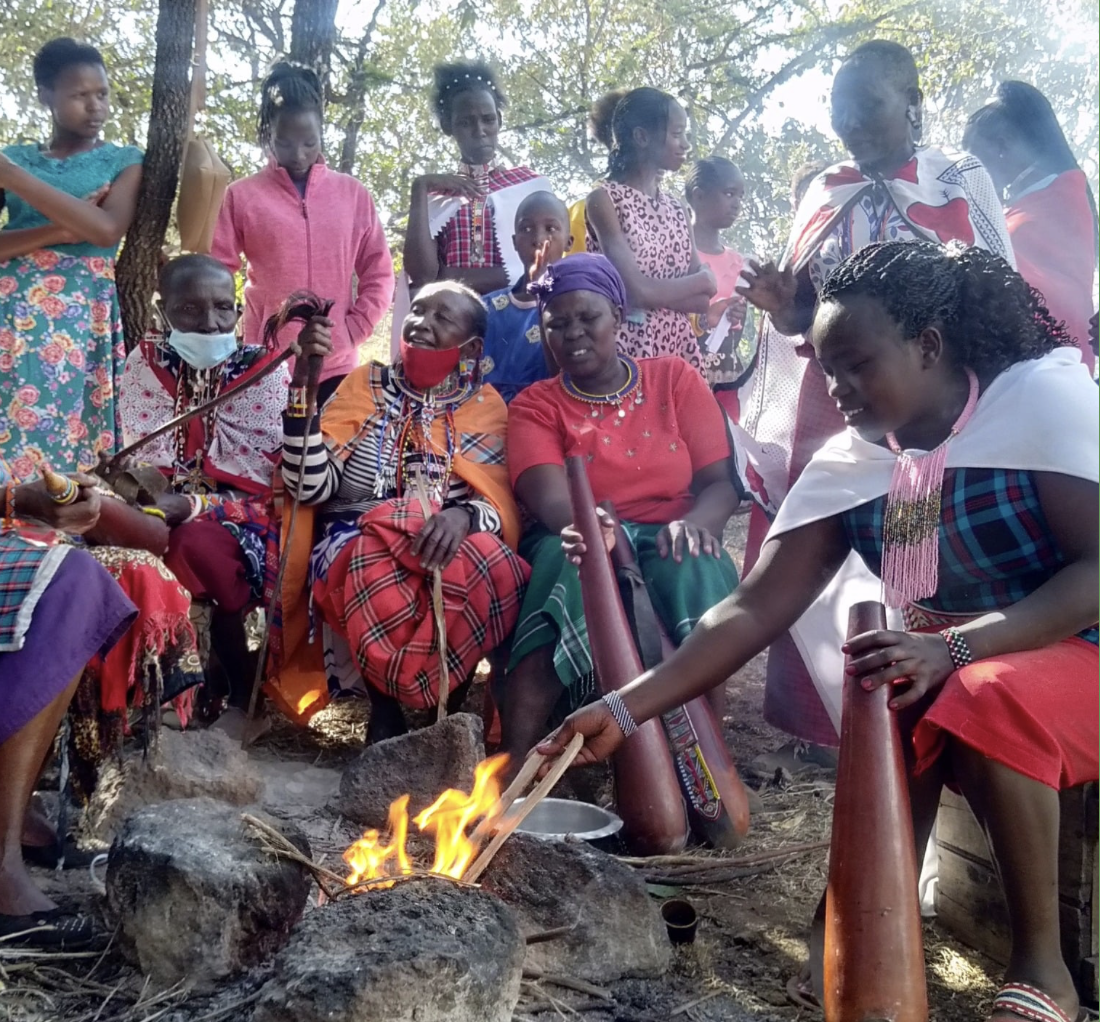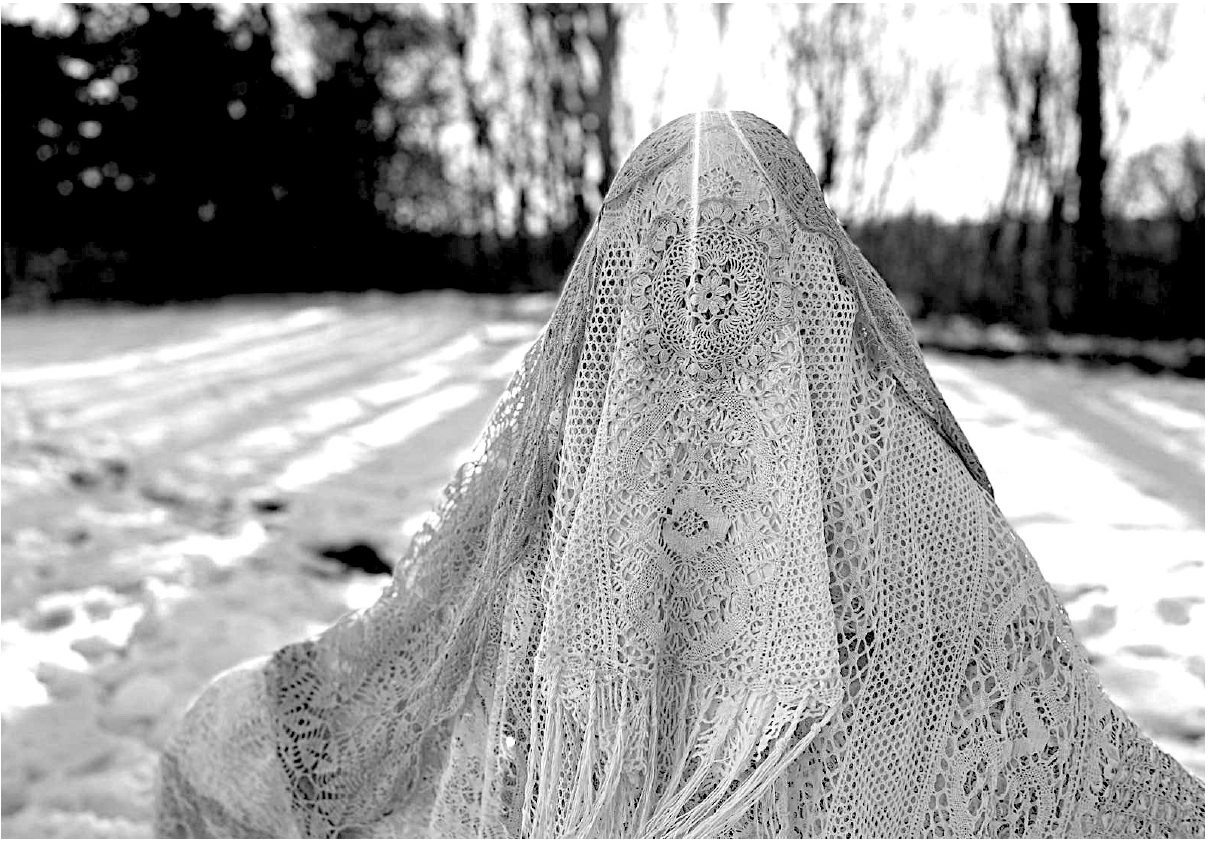Fostering Inclusivity and Peacebuilding Through the Transformative Power of the Arts
Inclusivity | April 2025
On Tuesday, April 15, the Peacemakers Network hosted its first Inclusivity-based Community of Practice meeting of 2025, “Fostering Inclusivity and Peacebuilding Through the Transformative Power of the Arts.”
Held in conjunction with World Art Day, 87 participants and distinguished speakers explored how their communities can utilize the arts to promote sustainable and inclusive peacebuilding efforts. In case you missed the meeting, you can find a recording of the event here.
The Role of Performing Arts in Peacebuilding
Hawa N. Kimbugwe opened the event with a spoken word performance that resonated deeply with the audience. She reminded those present, “There is difference between human beings and being human.” She also shared a personal reflection, “I’m now unlearning to learn,” highlighting the ongoing process of growth and transformation being central to peacebuilding. Read the full poem, titled “Mirembe, They Call It.”
Hawa N. Kimbugwe performing her spoken word piece titled ‘Mirembe, They Call It’ during the meeting.
The discussion then shifted to the first panel featuring practitioners and artists, exploring how performing arts have been used in peacebuilding efforts around the world.
The panel consisted of speakers: Dijana Korda Pejic of the Genesis Project, Anson Samuel from Co-Creating Spaces, Veronica Sabbog Afota of United Voices for Peace, and Hawa N. Kimbugwe of the Hawa Cares Initiative. The panel was moderated by a member of the Inclusivity Community of Practice Steering Committee, Yehuda Silverman of Acquaint.
Dijana Korda Pejic began the conversation explaining how her organization works to rebuild trust among religious and ethnic groups in Bosnia-Herzegovina that live nearby but rarely interact. One project she highlighted uses puppetry to teach children living near landmine fields about safety in an engaging and non-threatening way.
Project Genesis using puppetry to teach children living near landmines about safety.
Anson Samuel then shared about how the arts can transform physical spaces into canvases for dialogue. One example included the, “Blind Date in the Confessional,” where a Muslim street artist and an agnostic queer individual created an art installation of a confessional booth outside a cathedral, inviting strangers passing by to engage in unexpected conversations. Samuel further highlighted the role of musicals centered on hope, and efforts to address hate crimes against queer individuals in Vienna by using the arts to bridge divides.
Veronica Sabbag spoke about her experience as both a police officer and a peacekeeper for the European Union. Recognizing the limitations of official diplomacy, she founded her organization, United Voices for Peace, to foster dialogue between refugees and host communities through performative arts. One initiative, ‘Global Women in Music,’ features female composers from conflict zones, aiming to dismantle prejudice and foster inclusion. She asserted that, “Inviting composers to the global stage spreads engagement, combats prejudice, and triggers understanding, empathy, and dialogue.”
Global Women in Music Concert
Finally, Hawa N. Kimbugwe described her experiences working with secondary school students in Uganda, emphasizing that many biases are instilled during childhood. To counteract this, she organized peace clubs where students write and perform skits on issues like bullying, promoting empathy and inclusion.
To emphasize her point, Yehuda Silverman shared a project he led with the Singapore International Foundation in partnership with NalandaWay, in an orphanage in Chennai, India, aimed at addressing bullying. Children created puppets with unique personalities, a process that also taught conflict resolution and mediation skills, demonstrating how the arts can reimagine peace. Silverman then asked the panel to draw from their experiences and share strategies for engagement. The panelists emphasized that through poetry and theatre, students can explore new emotions,memories, and narratives. These elements encourage participation in peacebuilding and show how workshops centered on music and dance can promote mindfulness, security, and awareness. Panelists also highlighted the importance of co-creating safe spaces and embracing spiritual moments during artistic engagements.
Yehuda Silverman leading a puppetry project through the Singapore International Foundation with an orphanage in Chennai, India.
Learning How Visual Arts Contribute to Peacebuilding
The second panel discussion focused on how visual arts contribute to peacebuilding.
The panel consisted of speakers: Lisa Glybchenko from Color Up Peace, Teresa Wallace of World Vision International, Nishchhal Kharal from Freedom Studio, and Godwin Lasisi from UNICEF Nigeria. The panel was moderated by a member of the Inclusivity Community of Practice Steering Committee, Yemesrach Assefa of the Youth Ministry Service of the Ethiopian Catholic Church.
Lisa Glybchenko began by describing the, ‘Color Up Peace Art Exhibition,’ a project that invites people to submit photos of what peace means to them. Glybchenko transforms these images into coloring pages, allowing participants of all ages to engage creatively with the concept of peace.
The Color Up Peace Art Exhibition
Teresa Wallace presented the First Aid Arts project, supported by World Vision International. Wallace highlighted that based on neuroscience, this project has reached over 7,000 people in Ukraine, helping young people express themselves, manage emotions, and connect with others during times of conflict.
Ukrainian youth leaders learning psycho-education on the neuroscience and biological impacts of toxic stress and trauma through the arts.
Similarly, Nishchhal Kharal shared his work in activist spaces, using storytelling, graphic design, and performance installations to amplify voices and foster peace. Freedom Studio uses the power of creativity to challenge injustices, amplify marginalized voices, and drive meaningful social change. Freedom Studio supports those who fight for freedom and justice through leadership development, digital mobilization, campaign design, and IT innovation.
Nishchhal Kharal performing a sound healing experience.
Finally, Godwin Lasisi described how growing up in a divided Nigerian community inspired him to use the arts to promote sustainability and social cohesion. He highlighted how his project involved using recycled materials to create art that raises awareness of extinct animals and environmental issues, encouraging youth to become agents of change.
Godwin Lasisi leading projects using recycled materials to build art and raising awareness of environmental issues.
Panelists then reflected on the challenges they face, noting the challenges of implementing programs in active conflict zones, including high facilitator attrition. While burnout and chronic stress remain major challenges for peacebuilders, art often serves as a gateway to emotional expression and healing.
Strategies to Advance Global Art Initiatives
The final panel then focused on scaling and sustaining global art initiatives in peacebuilding, featuring speakers:Kit Nicholson from IMPACT, Hellen Almoustafa of the Hegemony Peace Project, and Nasreen Sheikh from the Empowerment Collective.
Kit Nicholson noted his efforts to connect artists and peacebuilders through sharing expertise and collaborating to influence policy. He spoke on how his organization supports theatres in Palestine, cross-border work in Cyprus, and exhibitions that bring together artists and academics.
Photo 1: In 2020, IMPACT provided support to the Cyprus-based Buffer Fringe Performing Arts Festival. They co-designed and launched a “Thinking Partners” initiative matching colleagues from diverse locations and areas of expertise with the artists who were creating new works for the Buffer Fringe. / Photo 2 (middle): IMPACT has been organizing global, facilitated online “conversations” in writing that are hosted at Platform4Dialogue virtual space run by Peace Direct. / Photo 3: A global research initiative supported by the Community Arts Network of the Porticus Foundation.
Hellen Almustafa emphasized the transformative power of art. She shared how her work at Imaging Peace cultivates artistic practices in conflict and post-conflict zones and promotes inclusive storytelling as a tool for advocacy and policy change. She also spoke about a toolkit that she developed for organizations and individuals seeking to harness the power of art for peace.
Photo 1: The Visual Voices Residency Program is a visual arts programme developed by Visual Voices, from Cyprus. The programme incorporates a peace education curriculum, specifically designed for socially-engaged artists who come from communities affected by conflict, and address related social issues. Photo credit: Giorgos Stylianou_Nurtane Karagil. / Photo 2 (middle): United by Sound focuses on music as a means of bringing people together. The project involves collaborations with musicians, composers, and artists from both the Greek Cypriot and Turkish Cypriot communities. / Photo 3: Indigenous Knowledge and Culture is a project designed to promote peace, social cohesion, and understanding, among community members in Ngong, Kenya who are different from each other in terms of ethnicity, age, gender and religion. It involves informal community gatherings in which elders from one ethnic group share stories about their cultural heritage, and its importance to the community and values, with youth of another ethnic group.
Finally, Nasreen Sheikh spoke about her focus on using art to support survivors of modern slavery. Projects such as A Table for Peace (a poem) and Veil (a textile art piece made from second-hand clothing) honor survivors’ stories and raise awareness about hidden forms of exploitation, especially in global supply chains.
The Veil is a textile-based fine art piece, conceived to represent protection and honor the anonymity of survivors of modern slavery, by Nashreen Sheikh.
Panelists then discussed how the broader peacebuilding community can better utilize the arts. Nicholson emphasized that emotional problems require emotional solutions. Art opens perspectives and encourages sympathy, allowing people to process emotions while engaging with complex topics. Almustafa called for inclusive spaces that encourage marginalized voices, while Sheikh reminded the group that art is a universal language and asked those present to consider a world where children are encouraged to create rather than just produce. The panelists concluded with the reminder,
“There is no peace without community.”
Follow the Peacemakers Network on social
